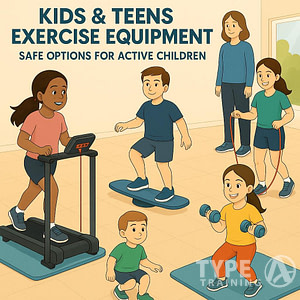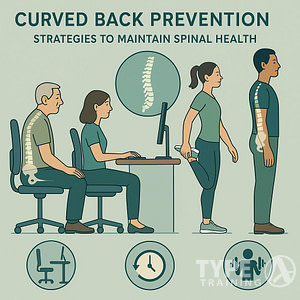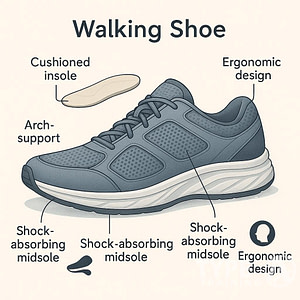Strength training for runners has gained significant traction as a cornerstone in modern training routines. When incorporated correctly, it bolsters running performance and resilience against injury. Emphasizing the development of muscle power and endurance, strength training complements the aerobic demands of running. By engaging in exercises that target key muscle groups, you can enhance your overall running mechanics, leading to more efficient and faster runs.
Understanding the integral role of strength exercises in a runner’s regimen is crucial for achieving optimal results. These exercises are not just about building muscle, but also about improving neuromuscular coordination and force production. The proper design of a strength program factors in the unique needs of a runner, sculpting a routine that evolves over time and aligns with the runner’s goals and race calendar. It’s essential to achieve a balance between strength work and running sessions to allow for ample recovery and prevent overtraining.
Injury prevention through strength training is a proactive approach to keeping you on your feet and running consistently. Runners often encounter repetitive stress injuries, but a well-structured strength plan reinforces the musculoskeletal system. Additionally, acquiring the right knowledge about equipment, nutrition, and recovery principles ensures that your body remains primed for both the rigors of strength training and the demands of running.
Popular posts:
Key Takeaways
- Strength training enhances running mechanics and performance.
- A well-structured strength program should be tailored to a runner’s individual goals.
- Injury prevention is a crucial benefit of incorporating strength training into a running routine.
The Fundamentals of Strength Training
Strength training is a crucial component of a runner’s regimen, focusing on developing the power and endurance of muscles, which can result in enhanced balance and stability, improved running economy, and overall better performance.
Understanding Strength Training
Strength training, at its core, involves exercises designed to improve your muscular strength and hypertrophy. For runners, it targets both the upper body and lower body, emphasizing core stability. When you engage in strength training, you are essentially challenging your muscles against resistance, leading to increases in muscle fiber size and neuromuscular strength. This training adapts your muscles to generate force efficiently, which is essential for both sprints and long-distance runs.
- Key Muscles for Runners: Glutes, hamstrings, quadriceps, calves, and core.
- Recommended Exercises: Squats, lunges, deadlifts, and planks.
Benefits for Runners
Incorporating strength training into your routine offers numerous benefits that directly impact your running prowess.
- Power: By strengthening your muscles, you’re able to provide more powerful strides with each step.
- Performance: Enhanced muscle strength contributes to faster running speeds and improved performance.
- Endurance: With stronger muscles, you’ll experience less fatigue during your runs, extending your endurance.
- Balance and Stability: These exercises improve core strength, which in turn enhances balance and stability, reducing the risk of injuries.
- Running Economy: Strengthened muscles use less oxygen at the same pace, which translates to a more efficient running economy.
Consistent strength training, when performed properly, is a proven method to elevate your running ability, ensuring each run puts you a stride ahead.
Essential Strength Exercises for Runners
Incorporating strength exercises into your training can enhance running performance and reduce injury risk. This section details key exercises targeting your core, lower body, and upper body, all of which are integral to a well-rounded runner’s strength program.
Core Strengthening
Your core is pivotal for stability and power while running. Planks are a powerful exercise to engage your entire core, improving your endurance and running posture. Work on side planks to target obliques and promote balance.
- Standard Plank: Aim for 30 seconds to 1 minute.
- Side Planks: Hold for 20 to 30 seconds on each side.
Lower-Body Workouts
Leg and glute strength are vital for propulsion and injury prevention. Squats and lunges effectively build this power, targeting your quads, hamstrings, and glutes. Incorporate deadlifts for hamstring and posterior chain development.
- Squats: 3 sets of 10-15 reps.
- Lunges: 2 sets of 10 reps per leg.
- Deadlifts: 3 sets of 8-12 reps.
Upper-Body Exercises
A strong upper body aids in maintaining form and provides momentum. Push-ups work your chest, shoulders, and triceps. For a balanced upper body workout, add movements that focus on the back and biceps.
- Push-ups: 2-3 sets of 10-20 reps, based on your fitness level.
Program Design and Structure
When it comes to strength training for runners, a well-structured program tailors to your experience level and fits into your running schedule without leading to overtraining. The right balance in your training plan can improve your performance and reduce the risk of injury.
Developing a Training Plan
For beginners, start with a simple plan that focuses on bodyweight exercises to build foundational strength. Your plan should introduce weights gradually. Intermediate runners might concentrate on increasing strength and power with more complex movements, while advanced runners can incorporate periodization, targeting different strengths in the training cycle, such as power or endurance. A thoughtfully crafted training plan should align with your specific running goals, whether it’s improving your speed, distance, or overall running economy.
- Beginner Example:
- Week 1-4: Bodyweight exercises (squats, lunges, push-ups)
- Week 5-8: Introduction to weights (dumbbell press, deadlifts)
- Intermediate to Advanced Transition:
- Week 9-12: Incorporate compound movements (bench press, squats with weights)
- Week 13-16: Focused power exercises (plyometrics, sprint drills)
Workout Frequency and Duration
Your workout frequency should harmonize with your running routine. Aim for 2-3 strength training sessions per week, ensuring that these sessions do not immediately precede or follow intense running workouts to allow for recovery. Each workout should last between 30 to 60 minutes to optimize gains without inflicting undue fatigue. It’s essential to monitor your body’s response to the program and adjust the intensity and duration accordingly.
- Beginner Frequency:
- 2 sessions per week, 30-minute sessions
- Intermediate to Advanced Frequency:
- 3 sessions per week, 45- to 60-minute sessions
A structured approach to strength training, tailored to your level of experience and meticulously integrated with your running schedule, will lay the groundwork for you to achieve your running objectives.
Injury Prevention and Management
In this section, you’re going to gain an understanding of how strength training plays a critical role in preventing and managing running-related injuries. You’ll learn about the types of injuries runners often face and how targeted exercises can help you avoid them.
Understanding Running-Related Injuries
Running, by its nature, places repeated stress on your body, particularly your joints, connective tissue, and muscles. Common injuries include runner’s knee, shin splints, and Achilles tendinitis. These often stem from overuse, muscle imbalances, and improper form. It’s crucial to understand the mechanisms of these injuries to engage in effective prevention strategies.
Strength Training to Prevent Injury
Incorporating strength training into your routine can be instrumental in addressing muscle imbalances that lead to injury. By strengthening the muscles around critical joints, you provide additional support and reduce the strain on your connective tissues. Exercises focused on your core, hips, and lower legs are particularly beneficial for injury prevention.
Here’s a simple structure you can follow:
- Core: Planks, bird-dogs, and Russian twists to enhance stability.
- Hips: Bridges, clamshells, and side leg raises to support your pelvis.
- Lower legs: Calf raises, toe taps, and ankle dorsiflexion for ankle and shin strength.
For a detailed injury prevention program, tailored to various running distances, visit Strength Running’s Injury Prevention.
Remember, the key is not only in choosing the right exercises but also in performing them with correct form and on a consistent basis. Dedicate time to strength training, and your running can improve while also keeping injuries at bay.
Equipment and Exercise Modalities
Incorporating strength training into your running routine necessitates selecting appropriate equipment and exercise modalities. Different types of gear can help enhance your strength workouts, and varying the modalities can keep your training engaging.
Free Weights and Machines
Using free weights like dumbbells and kettlebells allows for a wide range of motion and engages more muscles, which is beneficial for your running performance by closely mimicking the dynamic movement patterns involved in running. On the other hand, machines in a weight room offer a controlled environment which can be useful for isolating specific muscles and ensuring proper form, especially for beginners.
- Dumbbells: Ideal for exercises such as lunges, squats, and presses.
- Kettlebells: Effective for dynamic exercises like swings and goblet squats, promoting power and explosiveness.
Bodyweight and Resistance Band Exercises
Bodyweight exercises are a runner’s ally for building strength without the need for extensive equipment. They improve functional strength, which directly translates to better running economy. Adding resistance bands can further intensify these exercises, offering constant tension throughout movements, leading to enhanced muscle activation.
- Bodyweight exercises:
- Push-ups: Strengthen the chest, shoulders, and triceps.
- Squats: Develop leg and core strength, vital for runners.
- Resistance band exercises:
- Band Pull Aparts: Target the upper back and shoulders.
- Glute Bridges: Increase hip strength, which is critical for a powerful stride.
Nutrition and Recovery for Strength Training
Proper nutrition and recovery are paramount to maximize the benefits of your strength training routine. By focusing on these elements, you’re able to fuel your workouts effectively and ensure muscle repair, minimizing aches and reducing the risk of fatiguing prematurely.
Fueling for Training and Recovery
To fuel your body adequately for strength training, it’s essential to consume a balanced mix of macronutrients. Aim for a diet that includes carbohydrates for energy, proteins for muscle repair, and fats for long-lasting fuel.
- Carbohydrates: Your body’s main source of energy, crucial before and after workouts.
- Proteins: Help with muscle repair and growth, especially after a session.
- Fats: These should not be neglected as they provide a sustained energy source.
For practical recovery nutrition, an intake of 50 grams of carbs and 20 to 40 grams of protein within 30-60 minutes post-training can promote recovery.
Rest and Muscle Repair
Rest is equally as important as the workout itself for strength training. Your muscles need time to repair and adapt to the stresses from exercise. Getting adequate sleep and scheduling rest days are essential for this process.
- Sleep: A minimum of 7-9 hours per night to support recovery and reduce fatigue.
- Rest Days: Include these in your program to prevent overtraining and promote muscle repair.
Ignoring rest can lead to increased muscle aches and overall fatigue, hindering your progress in the long run. Remember, recovery is where the real magic happens in your strength training journey.
Frequently Asked Questions
In this section, you’ll find targeted advice on the most critical aspects of integrating strength training into your running routine and understand how it can benefit your performance and reduce the risk of injury.
What are the top strength exercises recommended for runners?
Incorporating exercises like squats, lunges, and deadlifts can build the lower body strength essential for runners. Additionally, planks and other core-strengthening exercises support overall stability and posture during runs.
How can runners integrate strength training into their routine at home?
You can begin with bodyweight exercises such as push-ups, bridges, and leg lifts, which do not require any special equipment. Resistance bands and kettlebells can also be great tools for at-home strength workouts tailored to runners.
What are the benefits of incorporating strength training into a runner’s regimen?
Strength training enhances your running economy by improving muscular power and neuromuscular coordination. It also contributes significantly to injury prevention, allowing you to run more efficiently and with greater force.
How often should a runner participate in strength training sessions per week?
A balanced routine typically includes strength training 2 to 3 times per week. This frequency aids in muscle recovery and growth without interfering with your running schedule.
Should runners focus on lifting heavier weights or maintaining lighter ones?
Balancing between heavier weights with fewer repetitions and lighter weights with more repetitions is key. This approach develops muscular endurance and explosive strength beneficial for different running scenarios.












